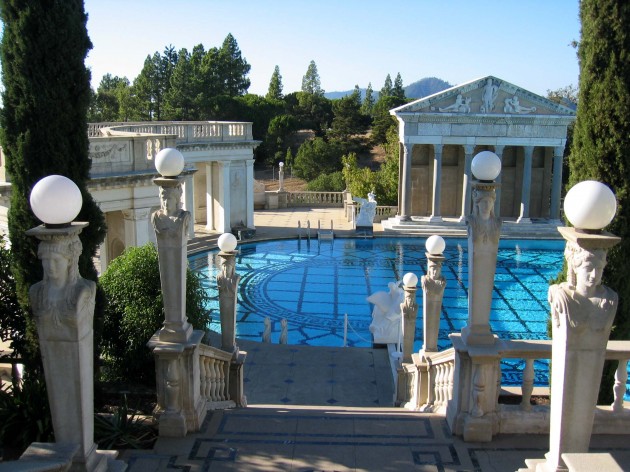There is an apocryphal story about Warren Buffett that I always found useful.
[mainbodyad]Years ago, when he was supposedly touring Heart Castle, the gargantuan San Simeon, California estate of American newspaper tycoon William Randolph Hearst, the tour guide spent hours highlighting the enormous scale and no-expense-spared luxuries. He talked about how much money was spent on each item and the cost of maintaining the mansion and grounds. At one point, Buffett is said to have yelled out to the tour guide, “Don’t tell us how he spent the money – tell us how he made it!”
That single approach illustrates why many people end up rich and others end up in poverty. I mentioned that during the past few nights, as I’ve worked on a project, I bought four seasons of Gossip Girl in high definition through iTunes for $200 (I figured since one of my companies, Mount Olympus Awards, made athletic clothing for the school’s wardrobe, I would enjoy watching it on screen knowing that it was cash flowing into my pocket). Anyway …
I’m willing to wager a significant percentage of the people watching that show only see how the fictional characters spend money. They focus on the designer bags, the trips to Bergdorf Goodman, and the Palace Hotel.
What do people like me see when they watch it?
- Every bottle of Dom Perignon, every Louis Vuitton bag, every hermes scarf transfers cash into the pocket of Bernard Arnault, the 62 year old Chairman of LVMH, who has a $41 billion net worth.
- Every stay at the Palace Hotel in New York goes into the pocket of The Dorchester Group, which is owned by the Brunei Investment Agency, which is the sovereign wealth fund through which the nation of Brunei invests its oil money. The cash you send to room service is literally going into the treasury of the Sultan of Brunei.
- Bergdorf Goodman is a subsidiary of Neiman Marcus, which was bought out by private equity firms Warburg Pincus and TPG Capital.
 When you see someone walk into Brioni or Kiton and drop $30,000 without thinking about it, don’t focus on the money they spent. Find out what they do, how they generate cash, and whether there is anything you can learn from it. Always ask, “How did they make their money?” and “What assets do they own?” rather than “How do they spend their money?”.
When you see someone walk into Brioni or Kiton and drop $30,000 without thinking about it, don’t focus on the money they spent. Find out what they do, how they generate cash, and whether there is anything you can learn from it. Always ask, “How did they make their money?” and “What assets do they own?” rather than “How do they spend their money?”.
And never forget that for someone making $5,000,000 a year, spending $30,000 is the equivalent of the average American household spending $300. They might be saving 50% or more of their income and pouring it back into investments. Don’t stretch yourself to buy things you can’t afford and in the name of all that is good and holy, don’t get into credit card debt. Instead, get your pocketbook, and your family, in a good financial place. Tiffany & Company will be waiting for you when you are ready to buy that diamond watch. To paraphrase The Richest Man in Babylon, don’t let your casual desires keep you from your ultimate dreams.
[mainbodyad]As I’ve said before, some people sign the front of checks, others sign the back of checks. Your goal is to make sure you do more of the latter than the former. Over time, it should add up to something meaningful. After all, what the rich really collect is assets. You’re likely to find more title deeds, stocks and bonds in their safe deposit boxes than you are diamonds and handbags. Those assets are what generate the stream of earnings to keep them dressed well in Park Avenue apartments.
Never forget: He who owns the assets collects the cash.

The Neptune Pool at Hearst Castle in San Simeon, California. Image Distributed Under Creative Common Attribute License by Michael Darter, Hearst Castle, October 2003



